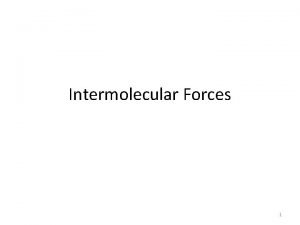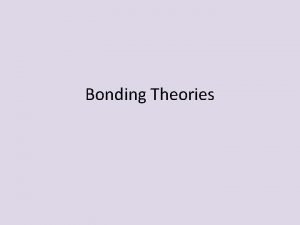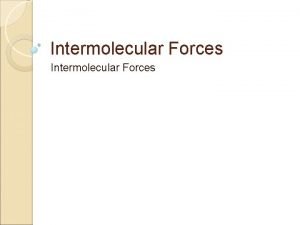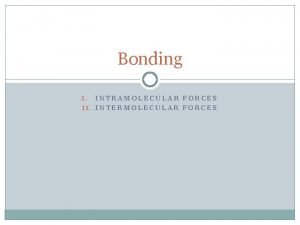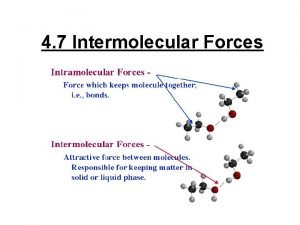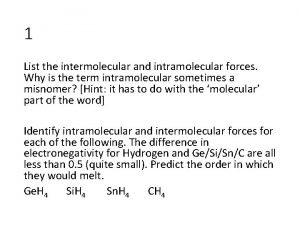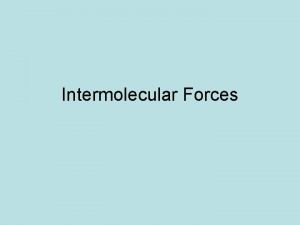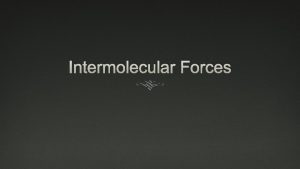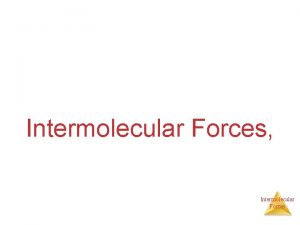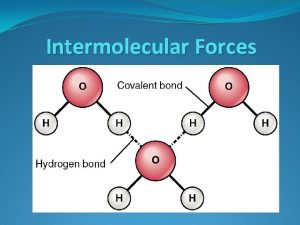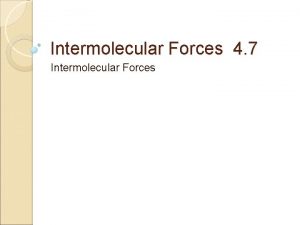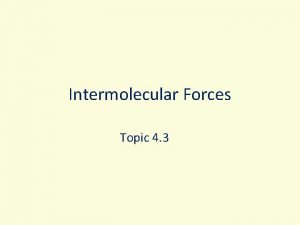I Intermolecular and Intramolecular Forces section 2 Ch











- Slides: 11

I. Intermolecular and Intramolecular Forces section 2 Ch. 13 - Liquids & Solids C. Johannesson

Intramolecular Forces • Forces within a molecule (between atoms) • Some covalent bonds are broken more easily than others • Strength depends on distance (bond length) • Size of atoms • Number of shared electron pairs • As the number of shared pairs increases, bond length decreases • Shorter bond=stronger bond • Triple bonds shortest, strongest C. Johannesson

Intermolecular Forces • Attractive forces between molecules • a. k. a. van der Waals forces • weaker than intramolecular forces C. Johannesson

B. Types of IMF C. Johannesson

B. Types of IMF • London Dispersion Forces View animation online. C. Johannesson

London Dispersion Forces • Weak forces that result from temporary shifts in the density of electrons in electron clouds • When 2 nonpolar molecules are in close contact, the electron cloud of one molecule repels the electron cloud of the other molecule • Changes the shape of the other C. Johannesson

C. Johannesson

Dipole-Dipole Forces • Attractions between oppositely charged regions of polar molecules - + View animation online. C. Johannesson

Dipole-Dipole Forces • Polar molecules have a permanent dipole and orient themselves so that oppositely charged regions match up. • Stronger than dispersion forces • If molecules being compared are similar in mass. C. Johannesson

Hydrogen Bonding • Occurs when H is bonded to F, O, or N • Creates a large partially positive charge on the H which is then attracted to the partially negative atom on another molecule C. Johannesson

C. Determining IMF • NCl 3 • polar = dispersion, dipole-dipole • CH 4 • nonpolar = dispersion • HF • H-F bond = dispersion, dipole-dipole, hydrogen bonding C. Johannesson
 Intramolecular vs intermolecular bonds
Intramolecular vs intermolecular bonds Intermolecular vs intramolecular
Intermolecular vs intramolecular Inter vs intramolecular forces
Inter vs intramolecular forces Intermolecular forces in water
Intermolecular forces in water Similarities of intermolecular and intramolecular forces
Similarities of intermolecular and intramolecular forces Why intermolecular forces are weaker than intramolecular
Why intermolecular forces are weaker than intramolecular Intramolecular vs intermolecular forces
Intramolecular vs intermolecular forces Intramolecular forces
Intramolecular forces Intramolecular interactions
Intramolecular interactions List of intermolecular forces
List of intermolecular forces Dipole dipole interaction example
Dipole dipole interaction example Van der waals gecko
Van der waals gecko




